When you buy products via links on our website, we might receive an affiliate commission. Learn more
11 Comprehensive Tips for Safe Outdoor Lighting
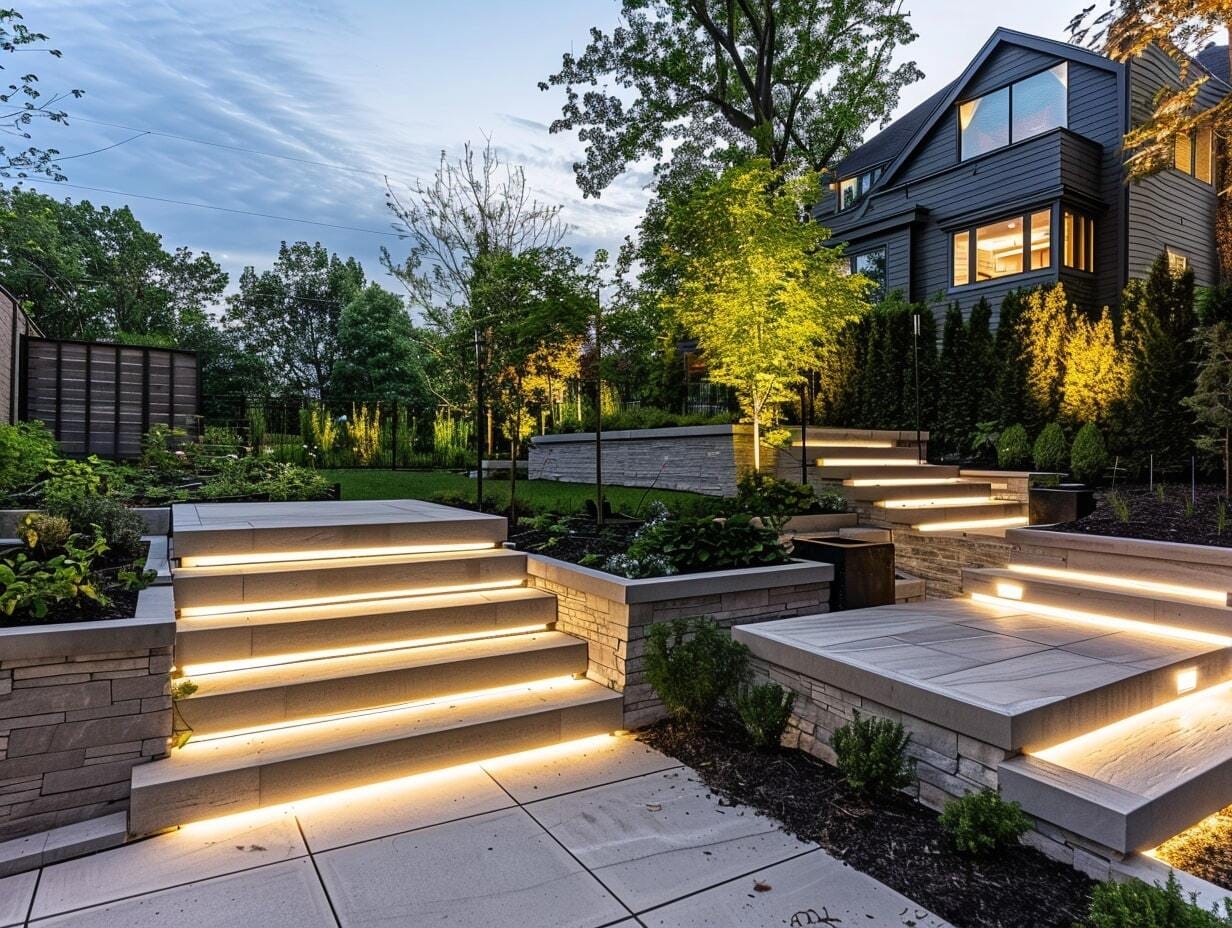
Planning safe and efficient outdoor lighting is not just about illuminating your yard or enhancing its aesthetics; it’s about boosting safety, adhering to regulations and adopting eco-friendly practices. Our comprehensive guide on tips for safe outdoor lighting comprises best practices to ensure your outdoor lighting is effective, responsible, and safe.
From understanding and complying with local codes and regulations to ensuring safe DIY installation practices and preventing lighting pollution, we cover 11 useful tips for safe outdoor lighting.
We also emphasize the need for smart outdoor lighting systems and professional help for complex outdoor lighting arrangements. Whether you are installing new lighting fixtures or upgrading your existing outdoor lighting setup, this guide offers valuable advice on illuminating your yard safely.
Ensure Compliance With Local Codes and Regulations
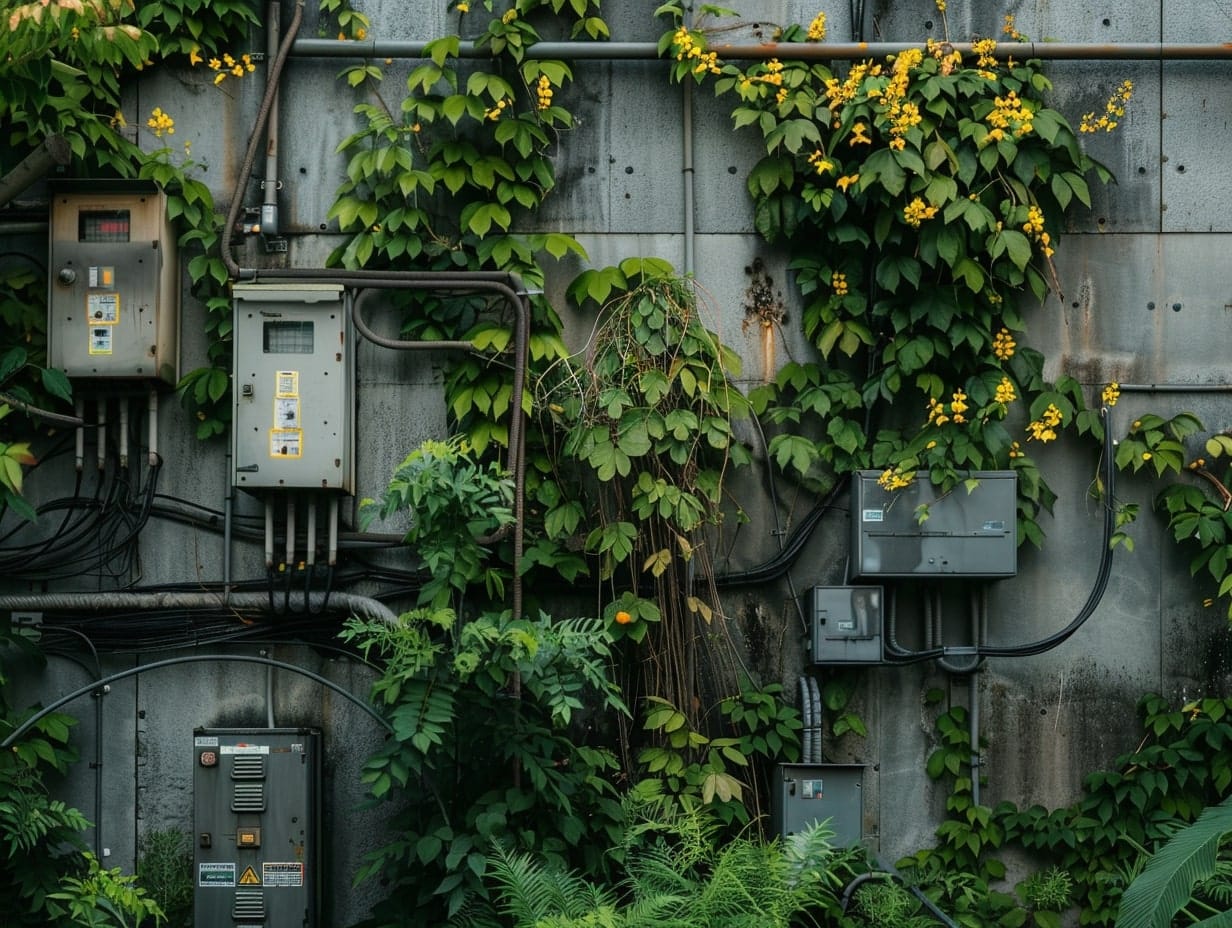
Adhering to local building codes and regulations is both a legal requirement and safety consideration.
Local electrical codes vary across areas and municipalities, and ensure the installation of electrical fixtures meets minimum safety standards. These codes cover aspects, such as:
- Specifications for outdoor electrical circuits
- Depth at which you must bury wiring
- Types of conduits and grounding methods you should use
Follow Electrical Safety
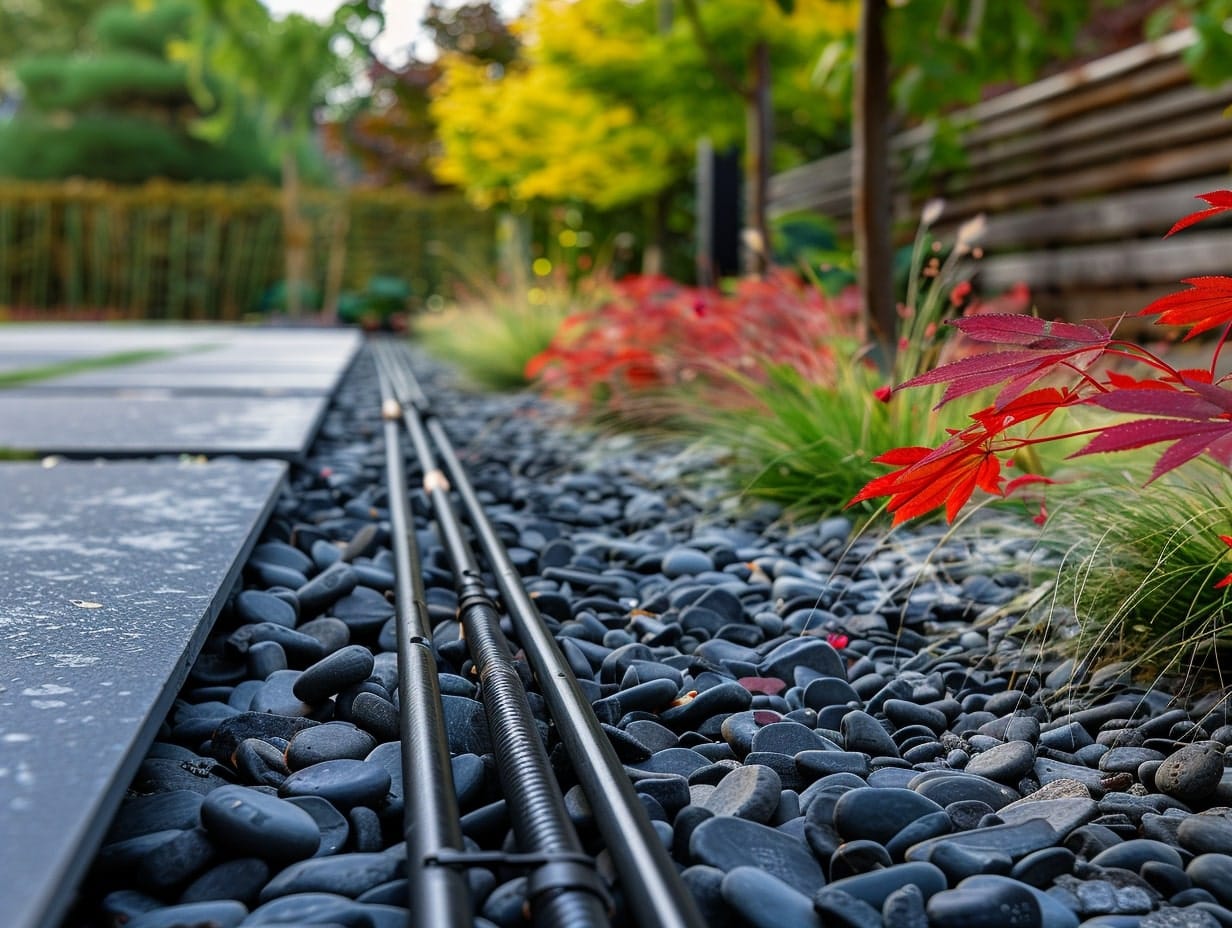
As already mentioned above, ensuring electrical safety is crucial when dealing with outdoor lighting fixtures to prevent accidents and maintain operational efficiency.
Leverage these quick tips to follow electrical safety for outdoor lighting:
- Ensure outdoor connections and wiring are properly protected from corrosion, moisture, and physical damage. Use outdoor-rated cables and conduit and ensure all connections are protected from water ingress.
- Understand the power capacity and limitations of your outdoor lighting system to avoid overloading circuits. Calculate the total wattage of all the fixtures to ensure it does not exceed the circuit’s total capacity, preventing overheating and fire hazards.
- Ground all electrical installations correctly to prevent electrical shock by providing a path for fault current to flow to the earth.
- Use Ground Fault Circuit Interrupter (GFCI) outlets for all outdoor electrical outlets for an extra protection layer. GFCIs quickly detect electrical current imbalances and shut off the power to prevent electrical shock.
- Ensure all electrical wires run through conduit and secure them above the ground to protect them from damage.
Choose the Right Designs and Materials for the Outdoor Lighting Fixtures
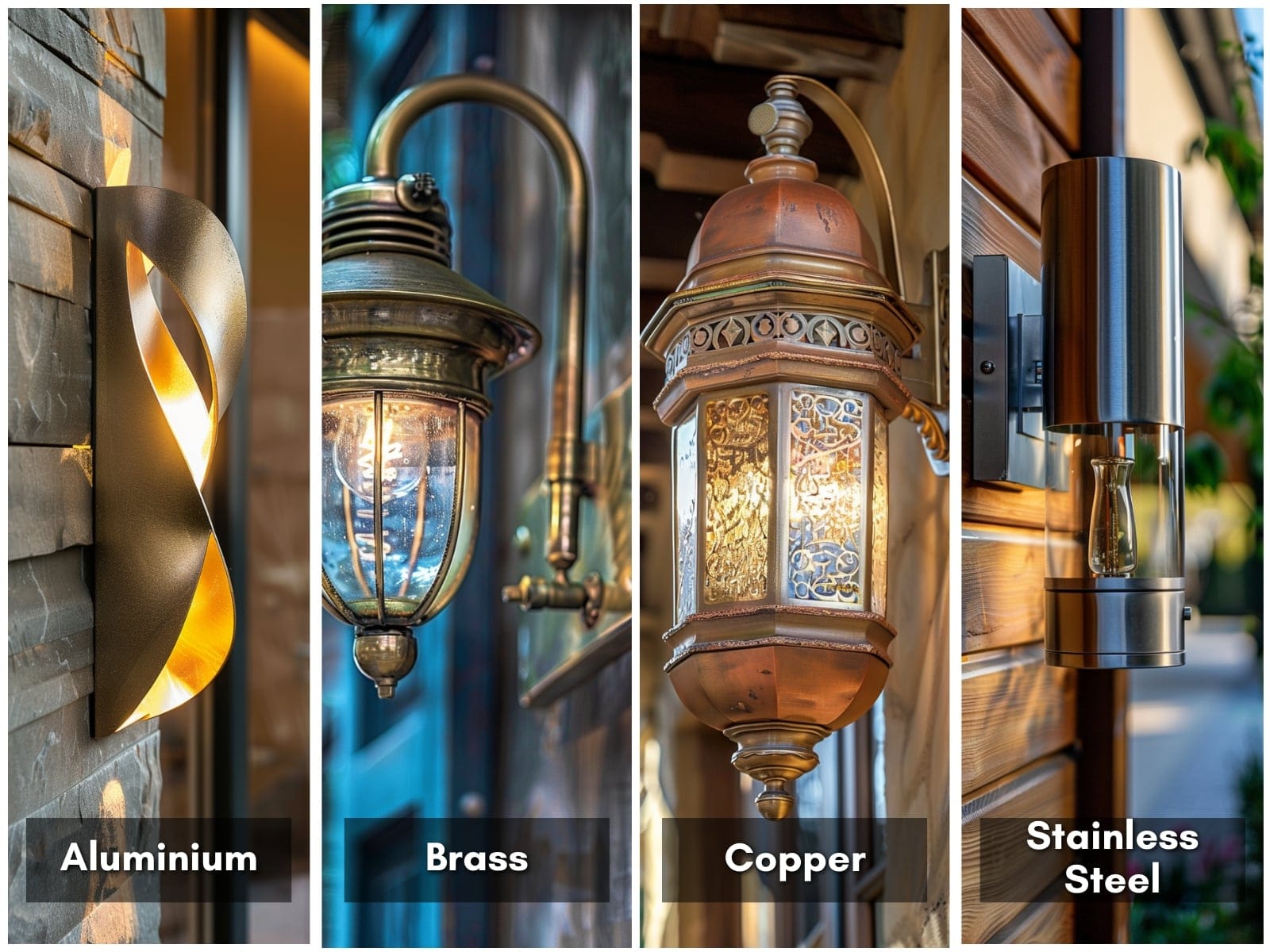
Outdoor lighting fixtures are exposed to several environmental elements daily, including the sun, rain, wind, and salt (specifically in coastal areas). These elements can lead to corrosion.
Therefore, consider using materials such as aluminum, brass, copper, and stainless steel for their durability and anti-corrosive properties.
Ensure the plastics used in your outdoor lighting fixtures are high-grade and UV-resistant to prevent fading and cracking.
For fixtures regularly exposed to wet conditions, ensure the gaskets and seals prevent water from seeping into the internal components.
Also, ensure the design of the outdoor lighting fixture prevents water accumulation inside the fixture to further prevent electrical hazards.
Adopt Safe DIY Installation Practices
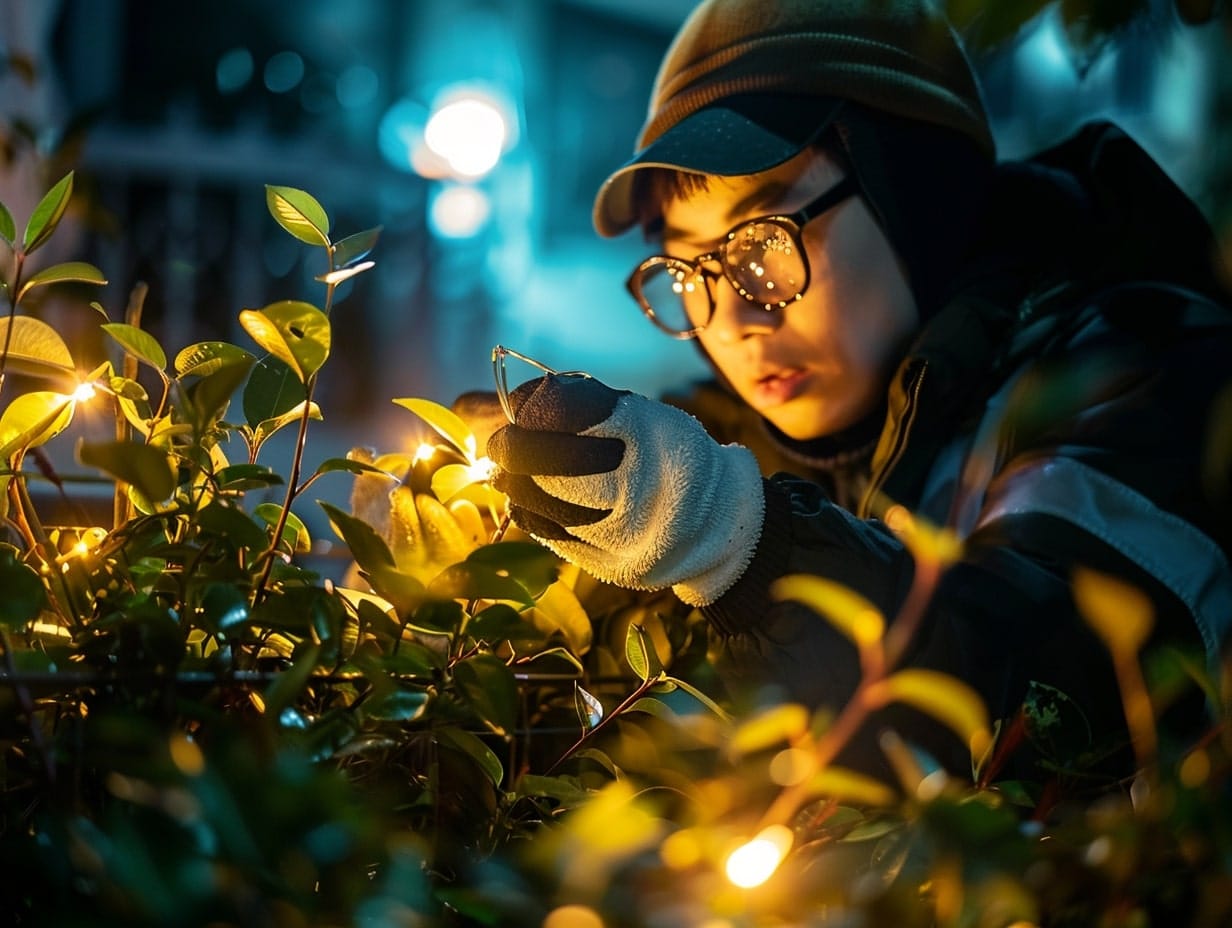
Before beginning the installation process, thoroughly understand the scope of your DIY lighting project for immediate safety during installation and long-term operational safety.
The scope will include:
- Type and number of fixtures
- Layout of the fixtures
- How you will connect each fixture to the power source
Follow these tips for safe DIY installation:
- Switch off the power supply to the installation area.
- Use a voltage tester to ensure the power is switched off to prevent electrical shock.
- Employ the right equipment and tools for safe installation. Use insulated tools, sturdy ladders, and personal protective equipment like gloves and safety glasses.
- Follow the manufacturer’s instructions carefully to ensure proper functioning and safety of each lighting fixture. Adhere to recommended installation techniques.
- Ensure all installations are weatherproof and waterproof. Use outdoor-rated components and fixtures (check for the certifications listed in the first section), seal connections and junction boxes appropriately, and ensure any penetrations (e.g., in the ground or through the walls) are properly secured from water seepage.
- Ensure proper bonding and grounding to prevent electrical shock. Ensure all metal components are accurately grounded and follow the local codes and regulations for grounding outdoor electrical systems (learn more in the next section).
Avoid Tripping Hazards
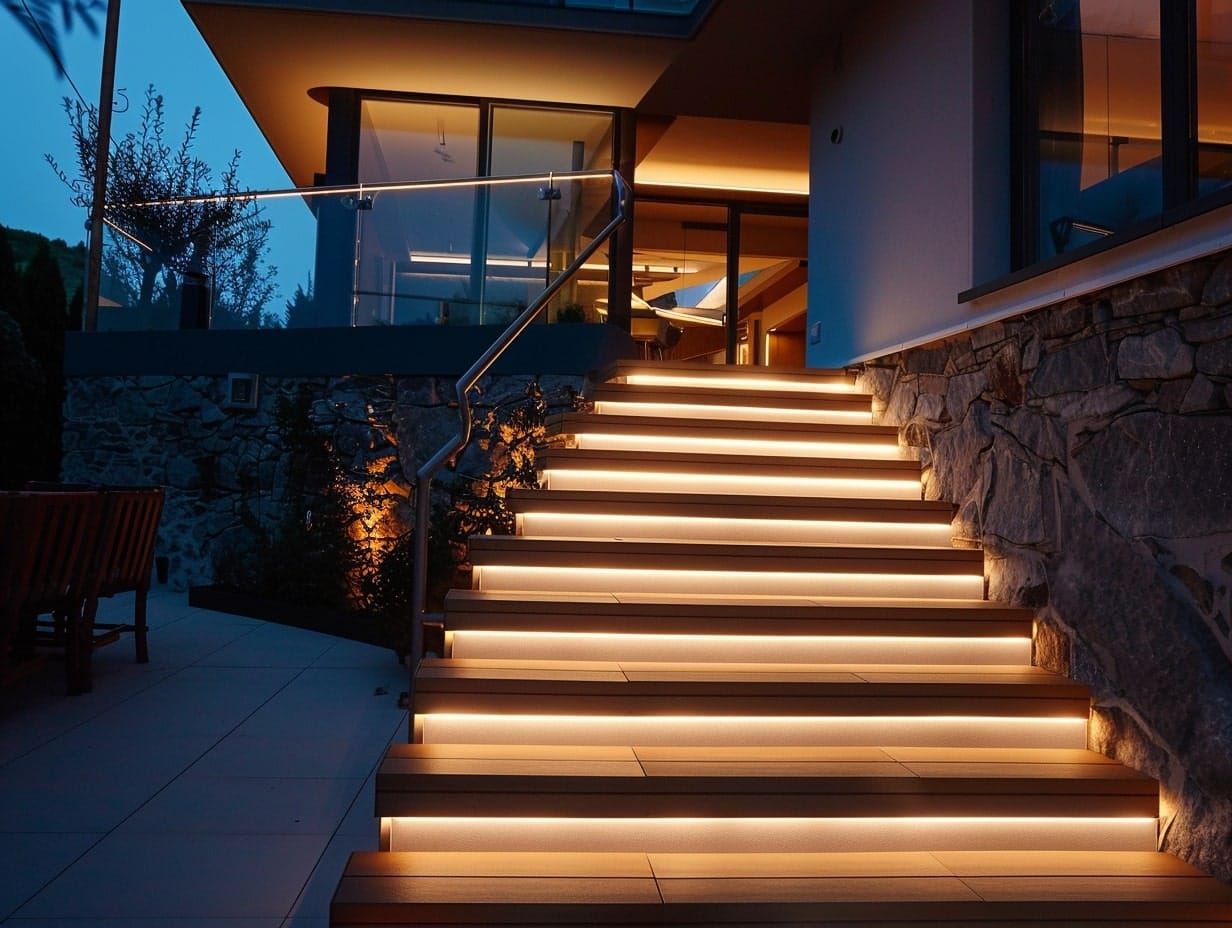
Avoiding tripping hazards is another critical aspect of outdoor lighting safety, especially since outdoor areas are often navigated in the dark.
Thoughtful placement of lighting fixtures, their components and associated wiring can significantly reduce the risk of accidents after sunset.
Follow these quick tips to mitigate tripping hazards with outdoor lighting:
- Position the lighting fixtures in a way that they illuminate obstacles, pathways, walkways, and steps, without becoming obstacles themselves.
- Place the lighting fixtures to the side of the pathways and walkways, or embed them into surfaces in a way that they do not become obstructions.
- Avoid running electrical cords and wiring across pathways and walkways. If the wires require crossing paths, bury or secure them in a way that minimizes exposure and tripping.
- Consider using battery- or solar-powered outdoor lighting fixtures that do not require wires, especially in outdoor spaces where wires can be a tripping hazard.
- Ensure all lighting fixtures are securely fixed to the ground or other surfaces to prevent accidents from loose or out of place fixtures.
- Ensure you illuminate elevated areas in your yard, such as ramps and steps, that are prone to falling and tripping hazards. Use step lights or lamp post lights to highlight these areas.
Understand and Look for Outdoor Lighting Safety Certifications
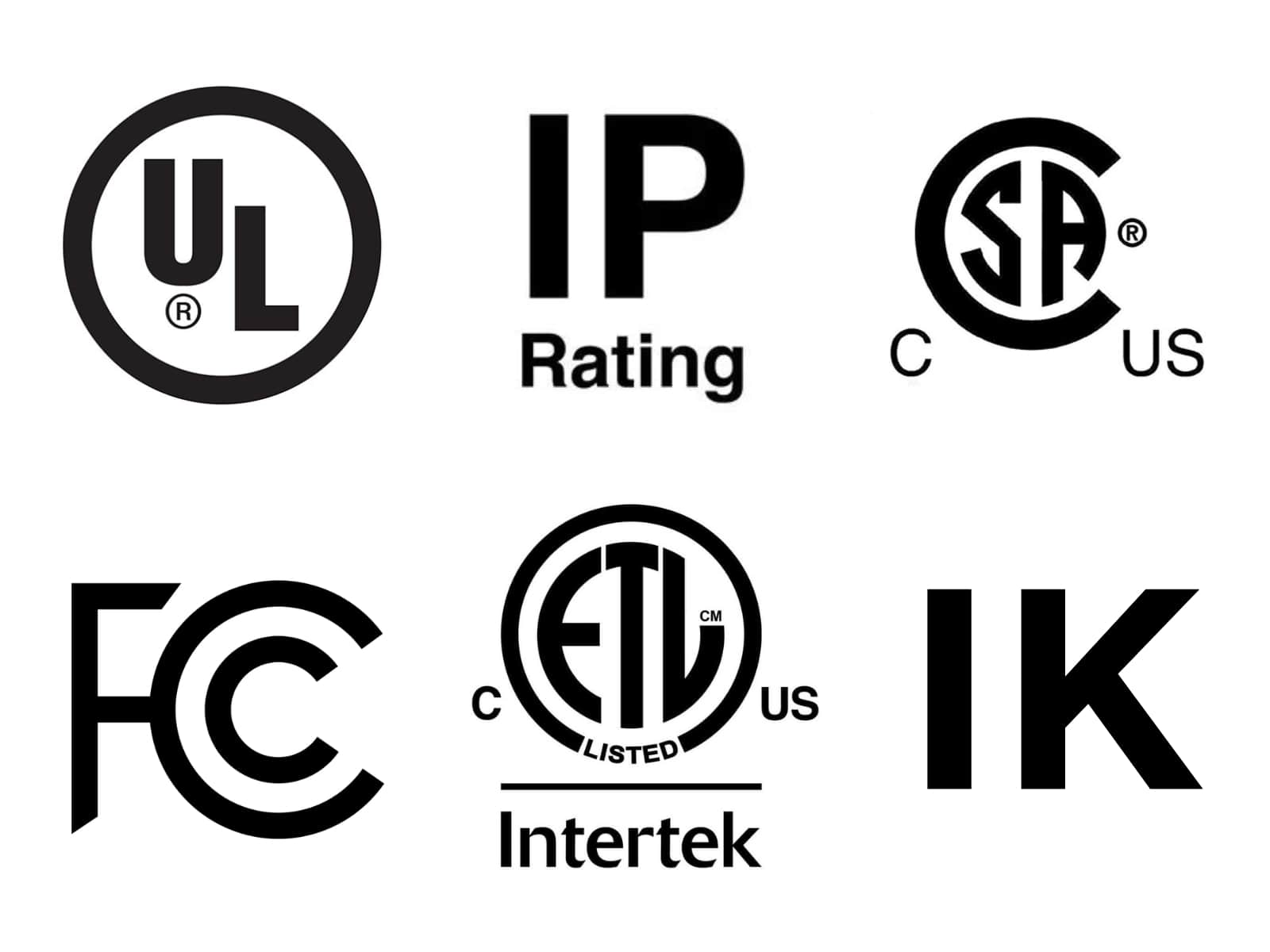
When installing outdoor lighting, it is crucial to understand safety standards to ensure the well-being of those who come into contact with your outdoor space.
Safety certifications are critical indicators of the safety and reliability of outdoor lighting products. These certifications confirm that the product meet specific standard of:
- Performance
- Safety
- Quality
You can find the markings for these certifications on an outdoor lighting product’s packaging or on the fixture itself.
Some recognized certification marks for outdoor lighting products are:
- Underwriters Laboratories (UL): It is a widely recognized safety certification in the U.S. It indicates compliance with UL safety standards. There are three types of UL marking — damp locations, dry locations and wet locations. For outdoor lighting, consider products with a UL Wet rating, which means the products are suitable for use in locations where they can come into direct contact with water.
- Intertek Testing Services (ETL): Similar to UL, an ETL mark demonstrates that the product complies with North American safety standards. Buy an outdoor lighting product with an ETL Wet rating to ensure the product is safe for outdoor usage in wet conditions.
- Canadian Standards Association (CSA): The CSA certification is recognized in both Canada and the U.S. It indicates that an outdoor lighting product meets the applicable standards for performance and safety in both countries.
- Federal Communications Commission (FCC): In the U.S., an FCC mark indicates that the electromagnetic interference from an outdoor lighting product is under approved limits.
- Ingress Protection (IP) Rating: The IP rating is critical to determining an outdoor lighting product’s resistance to solid objects and water. Outdoor lighting fixtures typically come with an IP65 or IP67 rating to ensure durability against dust ingress and low-pressure water jets from any direction.
- IK Rating: This rating is critical for outdoor lighting products in terms of impact resistance. It indicates how resistant a product is to mechanical impact.
Consider the Impact of Light Pollution on Visibility
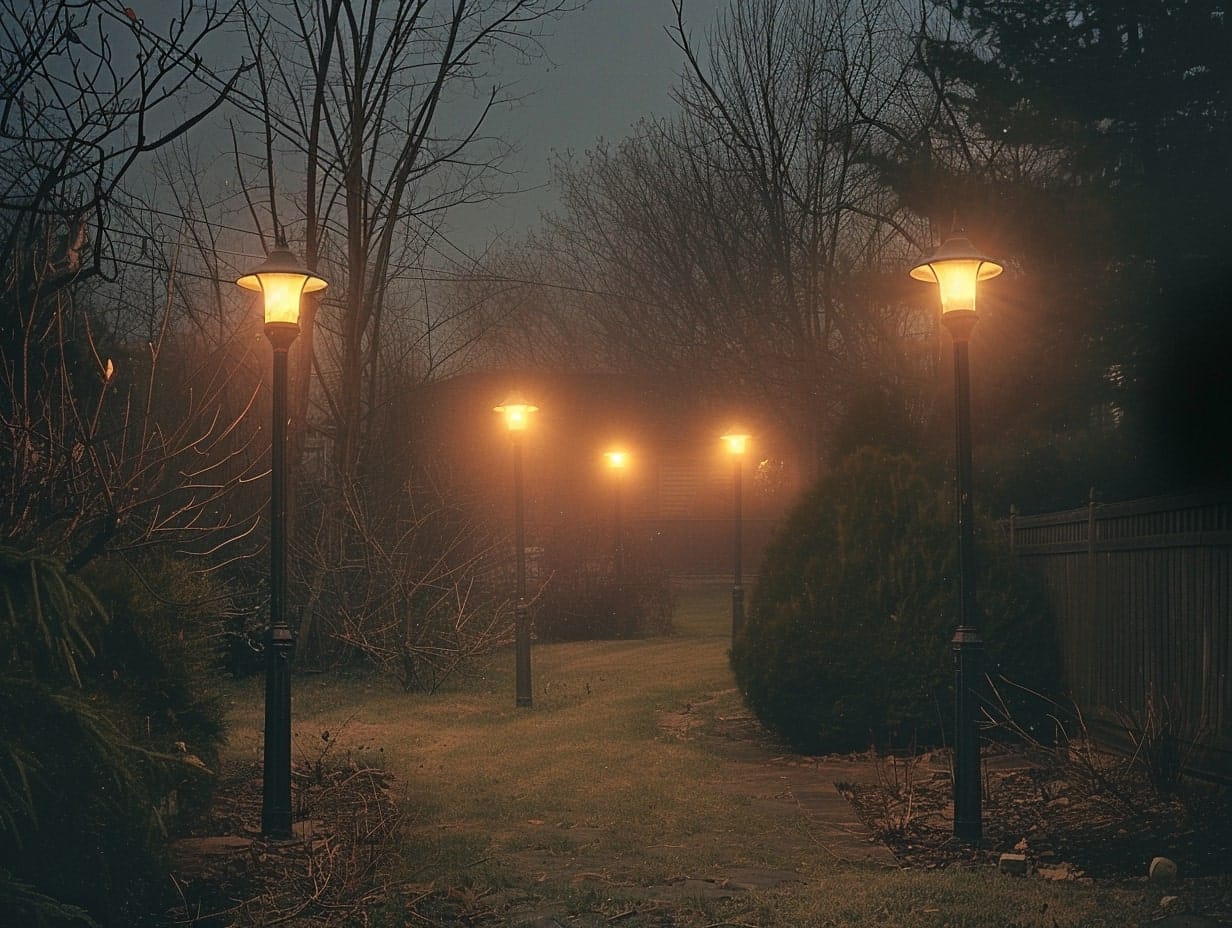
Light pollution refers to excessive or misdirected artificial outdoor lighting. It includes:
- Glare: Overly bright light that can cause visual discomfort or impairment, making it difficult to see, especially for older individuals with eye sensitivity to lights.
- Over illumination: Refers to the overuse of light, leading to decreased ability to perceive or and interpret visual information due to washing out of the surroundings.
- Light Trespass: Occurs when outdoor lighting spills into areas where it is not intended or needed, such as through windows or into neighboring properties.
- Skyglow: Refers to brightening of the night sky over inhabited areas, concealing the stars. It can also impact wildlife, especially nocturnal species, disorienting them from excessive artificial light and disrupting their natural behavior.
Adopt Dark Sky Practices to Reduce Light Pollution
Implementing dark sky practices to overcome light pollution includes using thoroughly shielded light fixtures that direct light downward, rather than allowing it to escape sideways or upward.
Use Lower Intensity Lighting and Warmer Color Temperatures
Lower intensity lighting and warmer color temperatures minimize scattering of light, minimizing skyglow and improving visibility at night.
Use Motion Sensors and Timers
Make the most of motion sensors and timers to use light only when required. This can contribute to the reduction of light pollution and reduce unnecessary illumination.
Focus on Glare Reduction
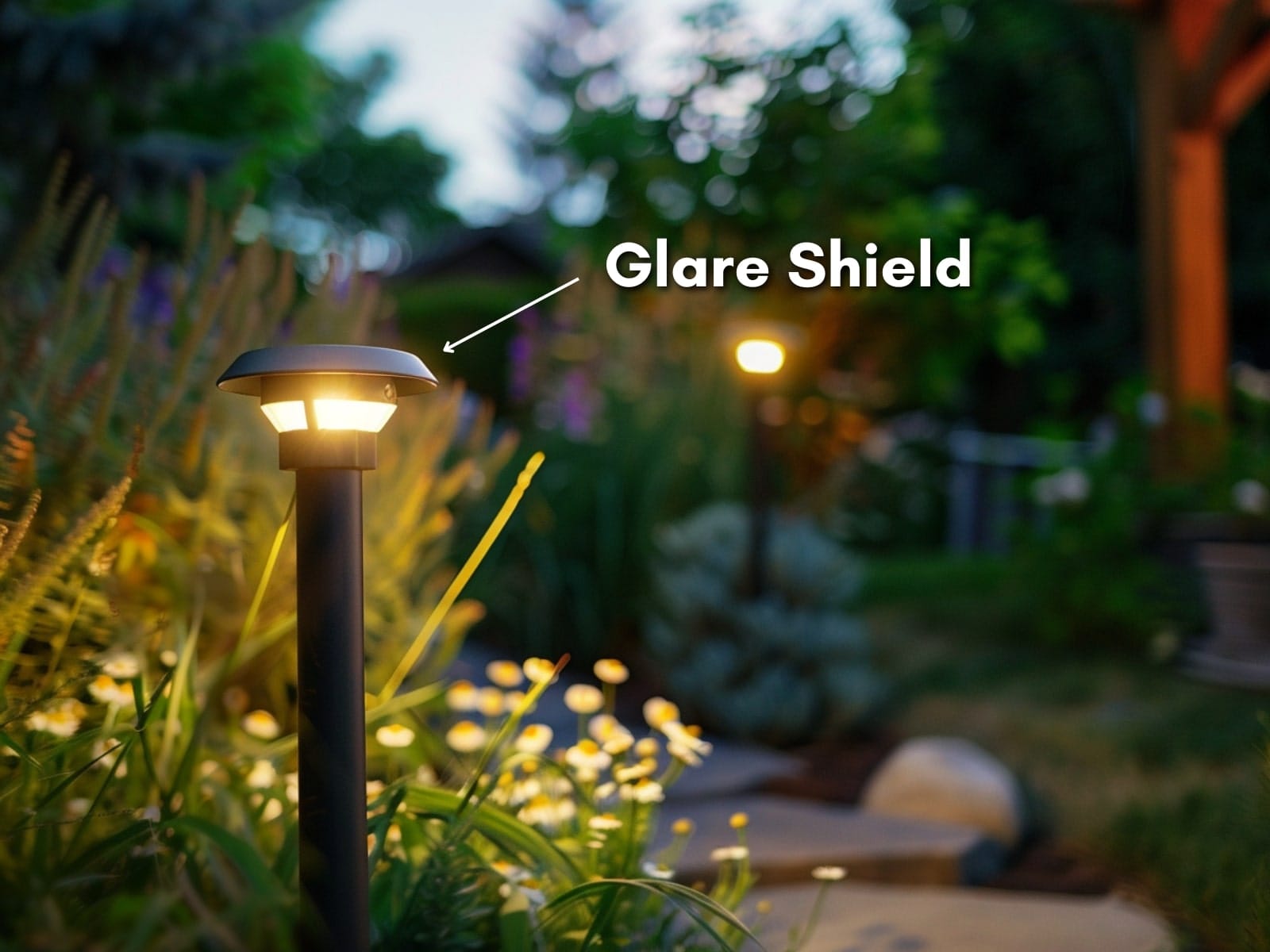
It’s important to focus on glare reduction to design effective and safe outdoor lighting.
Glare, which is bright and uncontrolled light, can impair vision and make outdoor navigation challenging at night. Here’s how you can reduce glare in outdoor lighting:
- Choose outdoor lighting fixtures that are designed to reduce glare or come with glare shields.
- Install the lighting fixtures at appropriate angles and heights to avoid direct contact with the light source.
- Use indirect lighting strategies where light is bounded off other surfaces (like ceilings or walls) to illuminate an area, softening the light distribution and reducing direct glare.
- Consider reducing the brightness or wattage of bulbs to minimize glare while still providing sufficient illumination for safety and visibility.
- Use diffused or frosted bulbs to reduce glare compared to traditional bulbs. LEDs, when properly installed, can also minimize glare due to their glare-reducing designs and directional lighting technique.
- Integrate landscape features such as shrubs and trees to naturally shield light and reduce glare. However, maintain these features regularly and ensure they do not block the light completely.
- Consult with a landscape architect or lighting designer to design an outdoor lighting strategy for minimizing glare.
Ensure Regular Inspection and Maintenance
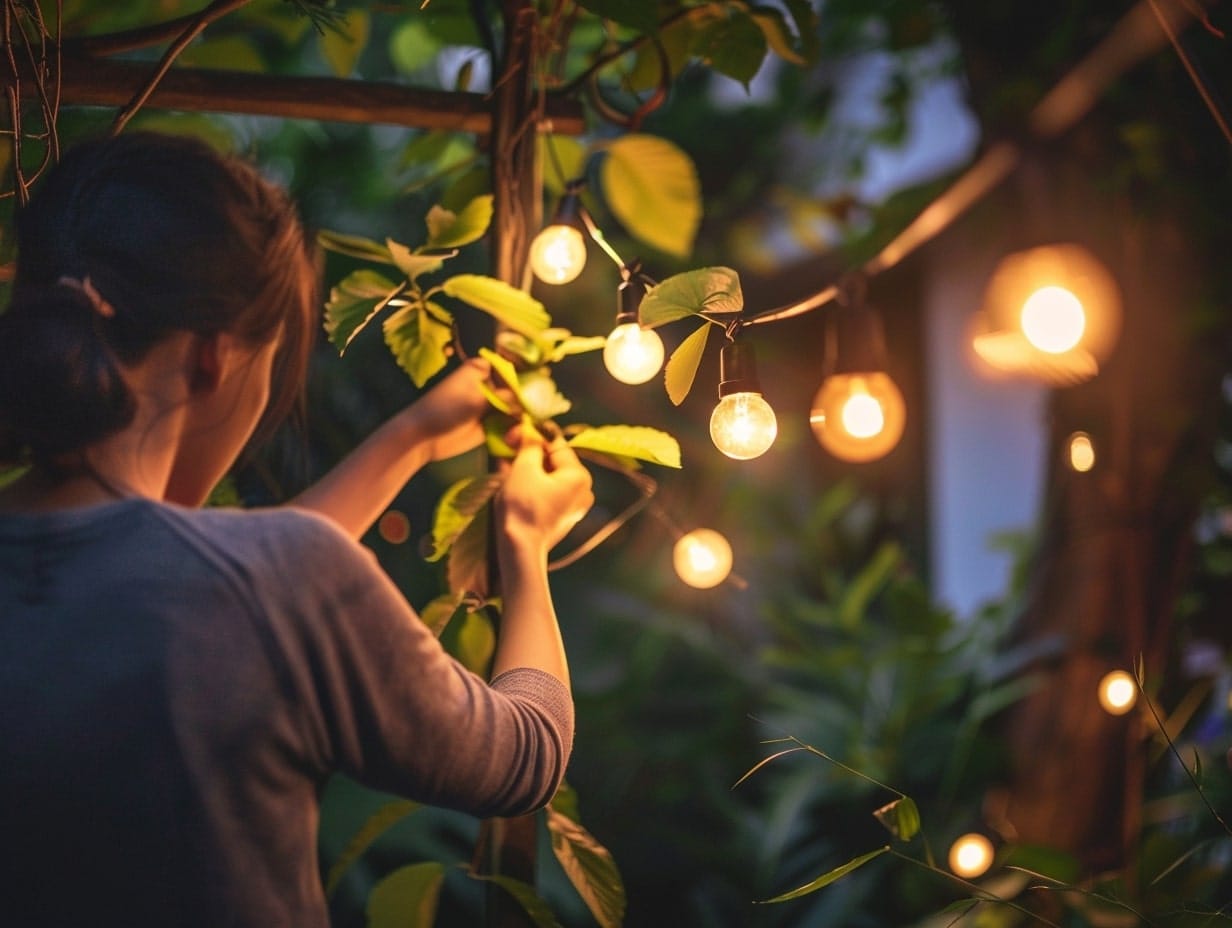
Regular inspection and maintenance of outdoor lighting fixtures is critical to ensuring their efficiency, longevity and safety.
Here’s a deeper look at the benefits of outdoor lighting fixtures’ regular inspection and maintenance:
- Regular inspections can identify potential hazards, such as damaged fixtures, exposed wires, or loose connections, which could pose risks of electrical shocks and fire hazards.
- Regular maintenance of outdoor lighting fixtures ensures they operate efficiently. Dirty or obscured fixtures can reduce illumination and lead to higher energy consumption as existing fixtures are overused or more fixtures are added to compensate for the loss in light output.
- If your outdoor lighting system uses motion sensors, photocells, or timers, regular checks are necessary to ensure their proper functioning.
In areas susceptible to corrosion, regular checks and maintenance can help you inspect metal parts of outdoor lighting fixtures for signs of corrosion. You can apply protective coatings on these parts to prolong their life.
Leverage Smart Outdoor Lighting Systems for Enhanced Safety
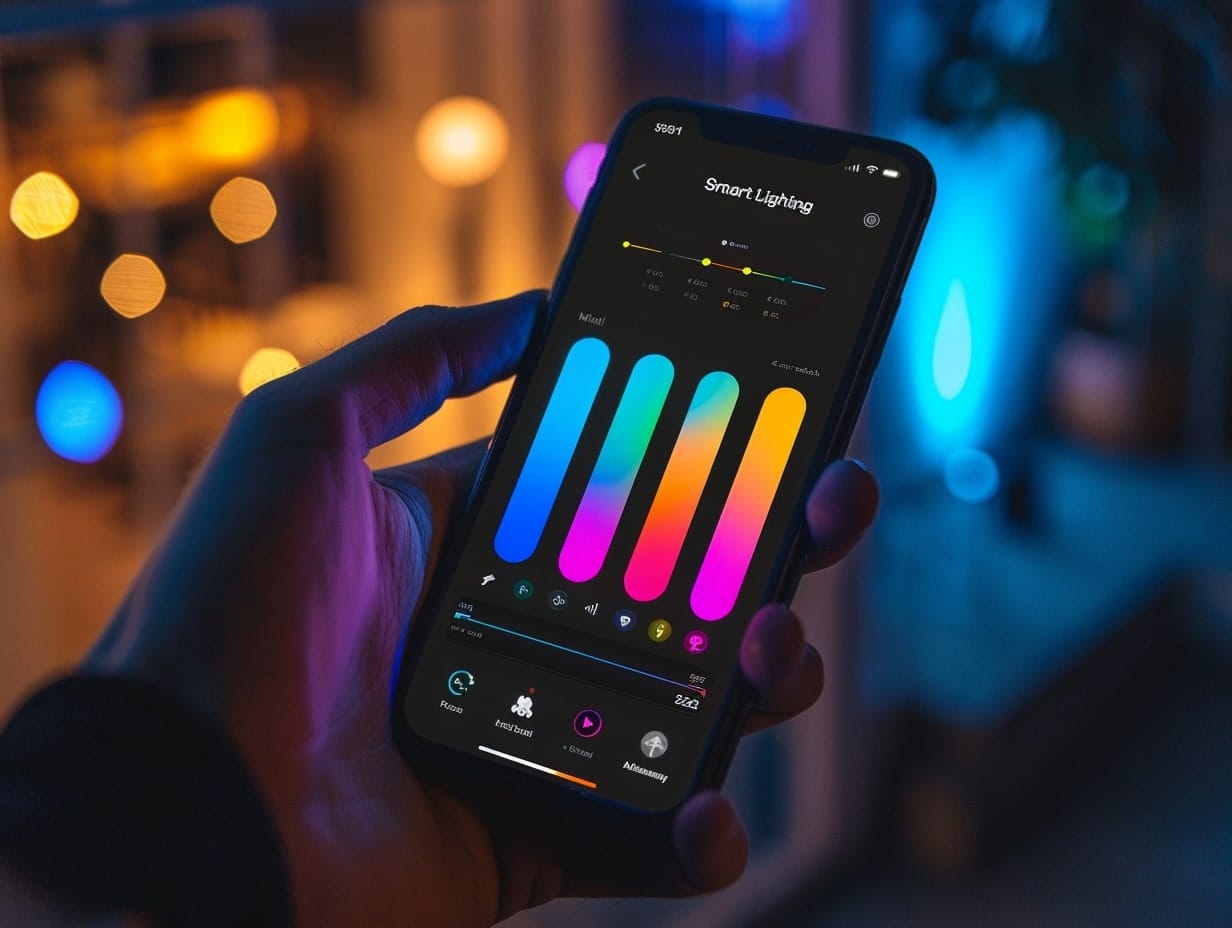
An interesting way to enhance the safety and ambience in your yard is to adopt smart outdoor lighting systems, powered by advanced technologies and features.
Here’s how smart outdoor lighting systems can enhance your yard’s safety:
Motion Detection
Most smart outdoor lighting systems come with motion sensors that automatically switch on lights when they detect movement. This feature enhances safety and security in your yard by deterring burglars and potential intruders.
Some smart outdoor lighting systems also send alerts and notifications to homeowners if the lights are triggered by motion or there is an unusual activity.
Automated Lighting Control
You can program smart outdoor lighting systems to automatically turn light on and off at specific times, ensuring your yard is well lit when needed. Automation can also deter potential intruders, giving them an impression that an area is occupied, even when it is not.
Customizable Lighting Zones
You can also program your smart outdoor lighting system to focus light on specific areas of your yard at specific times. Therefore, you can make the most of this feature to enhance the safety of important areas, such as entrances, pathways, walkways, and so on.
Remote Access and Control
With smart lighting, you can control your outdoor lights remotely also, using your smartphone or tablet. This feature enables you to light up your yard no matter where you are and ensure its safety.
Integration With Home Security Systems
You can integrate a smart outdoor lighting system with other home security systems, such as smart cameras and alarms. This integration can enhance the overall security of your yard by complementing existing security measures with lighting.
Consult With Professional for Complex Lighting Arrangements
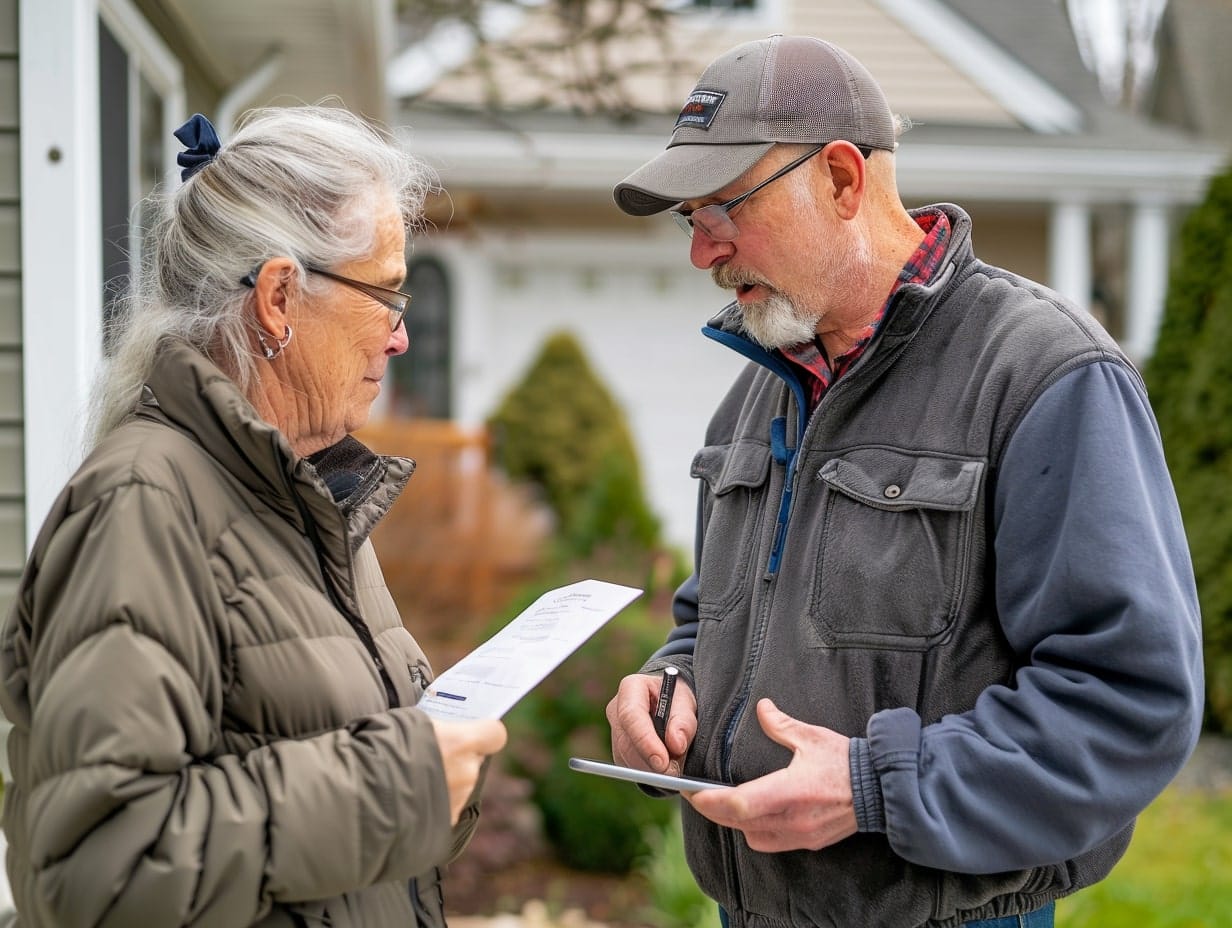
DIY outdoor lighting installation is not always the best choice, especially for complex lighting arrangements that require the expertise of lighting professionals for proper set up and functionality. Complex lighting setups are also intricate and require precise execution.
Professionals are well-versed in the technical aspects of lighting, such as fixture types, installation processes, and electric requirements. They also ensure your lighting strategy meets all local codes and regulations.
Lighting experts also have experience with a wide range of projects, which enables them to identify issues and suggest solutions, and access to commercial-grade lighting fixtures that may not be available to you.
